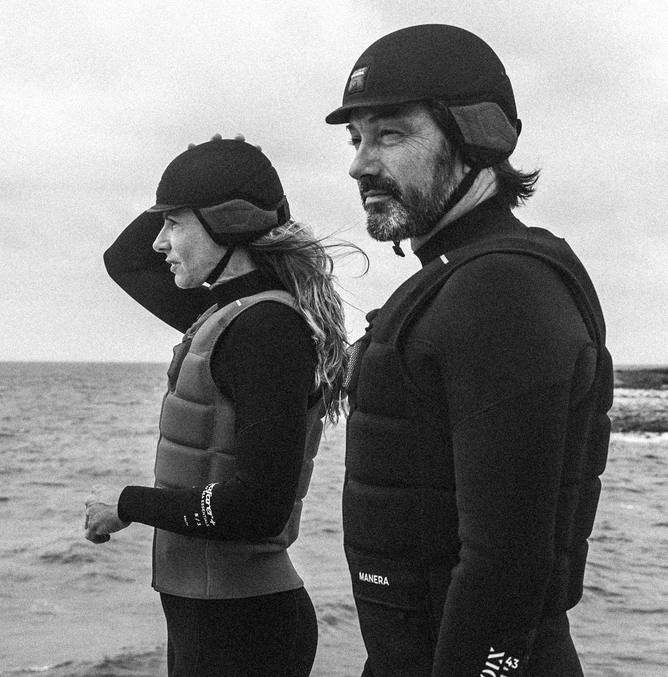Safety Equipment. What are the options? In addition to your wetsuit that keeps you warm and offers some impact protection. Vests and helmets offer some very important protection.
Protecting the brains and the core behind your performance is a no brainer!
Helmets offer protection from impact with your equipment and the water when crashing from height at speed. Height and speed is what foiling is all about. They also offer an excellent addition to insulation. A lot of your body heat loss is from your head.
Vests offer buoyancy, protection from impact with your equipment and the water, and an extra layer of insulation.
Choosing Helmets and Vests is straight forward if you follow a simple process. First choose your water sport. Then consider your water confidence and your skill level at your chosen water sport. Some consideration can be given to riding location e.g reefs and rocks etc. This will narrow down the range of options, leaving size and fitting comfort, plus a bit of personal preference.
Surfing:
Helmets need to be slimline, for minimal water catch when duck diving and to drain quickly. Full ear protection assists with preventing ear internal injury and preventing surfers ear in cold conditions. Vests are generally not necessary for surfing unless you’re a big wave chaser and towing in.Kiteboarding:
Helmets can be slimline or thicker. More thickness offers more protection. Vest main function is impact, and a slimline fit is more comfortable allowing more freedom of movement. Vests for kiteboarding have a specific design with no bulky padding on the lower abdomen and back. This allows wearing a harness over the top of the vest.Foiling Sports:
Helmets can be slimline or thicker. More thickness offers more protection. Slimline helmets can minimize water catch and neck injury when crashing from height at speed. Vest main functions are impact and buoyancy. The importance of these functions varies across the foil sports. A slimline fit is more comfortable and allows more freedom of movement, but less buoyancy and impact protection.
If you are learning and progressing at Wing foiling a thicker vest that offers full lower abdomen and back protection is advisable. Lower rib area protection is key. Thicker also offers more buoyancy. The same applies to Tow and Wake Foiling.
For Prone and SUP Surf foiling a slimline helmet is advisable. Vests are generally not necessary.
If you are DW Down Wind Foiling and heading offshore; NZ Maritime Law, requires a rated PFD; Personal Flotation Device. DW vests are more specific in design offering high buoyancy in a compact design for freedom of movement. Additional features are in-built hydration systems, compartments for communication devices and nourishment, and extra safety features like whistles and flashing LED light.
We have helmet and vest options to suit all these water sports. Check out our range online and please contact us for guidance.
